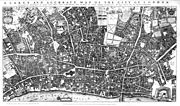
Aesop's Fables, or the Aesopica, is a collection of fables credited to Aesop, a slave and storyteller who lived in ancient Greece between 620 and 564 BCE. Of diverse origins, the stories associated with his name have descended to modern times through a number of sources and continue to be reinterpreted in different verbal registers and in popular as well as artistic media.

Over the centuries, there have been five theatres in Dublin called the Theatre Royal.
The Belly and the Members is one of Aesop's Fables and is numbered 130 in the Perry Index. It has been interpreted in varying political contexts over the centuries.
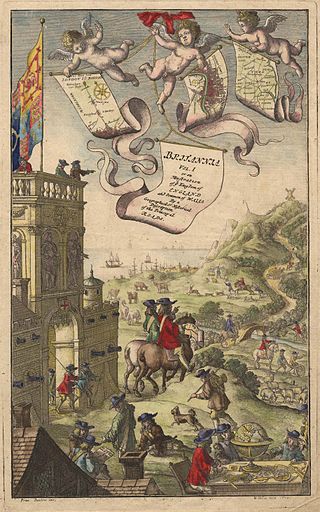
Francis Barlow was an English painter, etcher, and illustrator.
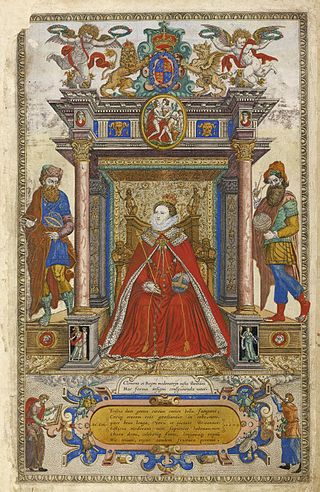
Christopher Saxton was an English cartographer who produced the first county maps of England and Wales.
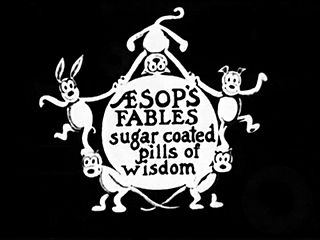
Aesop's Fables is a series of animated short subjects, created by American cartoonist Paul Terry. Produced from 1921 to 1933, the series includes Scrambled Eggs (1926), The Window Washers (1925), Small Town Sheriff (1927), Dinner Time (1928), and Gypped in Egypt (1930). Dinner Time is the first cartoon with a synchronized soundtrack ever released to the public. The series provided inspiration to Walt Disney to found the Laugh-O-Gram Studio in Kansas City, Missouri, where he created Mickey Mouse.
Map Man is a BBC documentary series first broadcast on BBC Two in 2004 and repeated in 2013. Each episode recounts a particular tale in the history of British cartography, with a particular emphasis on the individuals whose dedication and ingenuity led to the production of some of history's most ground-breaking maps.

A road map, route map, or street map is a map that primarily displays roads and transport links rather than natural geographical information. It is a type of navigational map that commonly includes political boundaries and labels, making it also a type of political map. In addition to roads and boundaries, road maps often include points of interest, such as prominent businesses or buildings, tourism sites, parks and recreational facilities, hotels and restaurants, as well as airports and train stations. A road map may also document non-automotive transit routes, although often these are found only on transit maps.

Aesop was an ancient fabulist and storyteller credited with a number of fables now collectively known as Aesop's Fables. Although his existence remains unclear and no writings by him survive, numerous tales credited to him were gathered across the centuries and in many languages in a storytelling tradition that continues to this day. Many of the tales associated with him are characterized by anthropomorphic animal characters.

Since the 17th century, there have been numerous theatres in Dublin with the name Smock Alley.
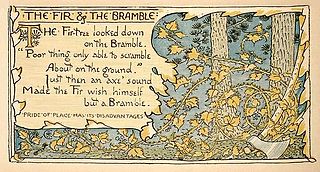
The Fir and the Bramble is one of Aesop's Fables and is numbered 304 in the Perry Index. It is one of a group in which trees and plants debate together, which also includes The Trees and the Bramble and The Oak and the Reed. The contenders in this fable first appear in a Sumerian debate poem of some 250 lines dating from about 2100 BCE, in a genre that was ultimately to spread through the Near East.

Emanuel Bowen was a Welsh map engraver, who achieved the unique distinction of becoming Royal Mapmaker to both to King George II of Great Britain and Louis XV of France. Bowen was highly regarded by his contemporaries for producing some of the largest, most detailed and most accurate maps of his era. He is known to have worked with most British cartographic figures of the period including John Owen and Herman Moll.
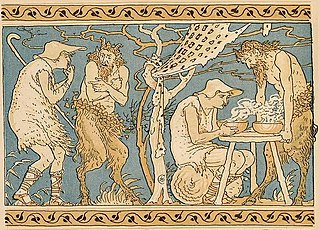
The Satyr and the Traveller is one of Aesop's Fables and is numbered 35 in the Perry Index. The popular idiom 'to blow hot and cold' is associated with it and the fable is read as a warning against duplicity.
Dirk Stoop was a widely travelled painter and engraver of the Dutch Golden Age. Alternative versions of his name include Dirck Stoff, Theodorus Stoop, Thierry and Rod(e)rigo, by which he was known in Portugal.

The Fox and the Weasel is a title used to cover a complex of fables in which a number of other animals figure in a story with the same basic situation involving the unfortunate effects of greed. Of Greek origin, it is counted as one of Aesop's Fables and is numbered 24 in the Perry Index.

The Ape and the Fox is a fable credited to Aesop and is numbered 81 in the Perry Index. However, the story goes back before Aesop’s time and an alternative variant may even be of Asian origin.

Britannia Depicta or Ogilby improv'd was an illustrated road atlas for Britain. It was printed in numerous editions over many decades from 1720 into the 19th century and updated with engravings by many artisans who worked from drawings of other artists. It featured strip maps.

The story of the bald man and the fly is found in the earliest collection of Aesop’s Fables and is numbered 525 in the Perry Index. Although it deals with the theme of just punishment, some later interpreters have used it as a counsel of restraint.

The Weasel and Aphrodite, also known as Venus and the Cat is one of Aesop's Fables, numbered 50 in the Perry Index. A fable on the cynic theme of the constancy of one's nature, it serves as a cautionary tale against trusting those with evil temper, for even if they might change their body, they will not change their mind.

Britannia is the title of each of three atlases created in England the late 16th and mid 18th centuries, describing some or all of the British Isles. These are the books published by William Camden and Richard Blome and John Ogilby. Of the three, Ogilby's is probably best known because it was the first to use measured distances.






